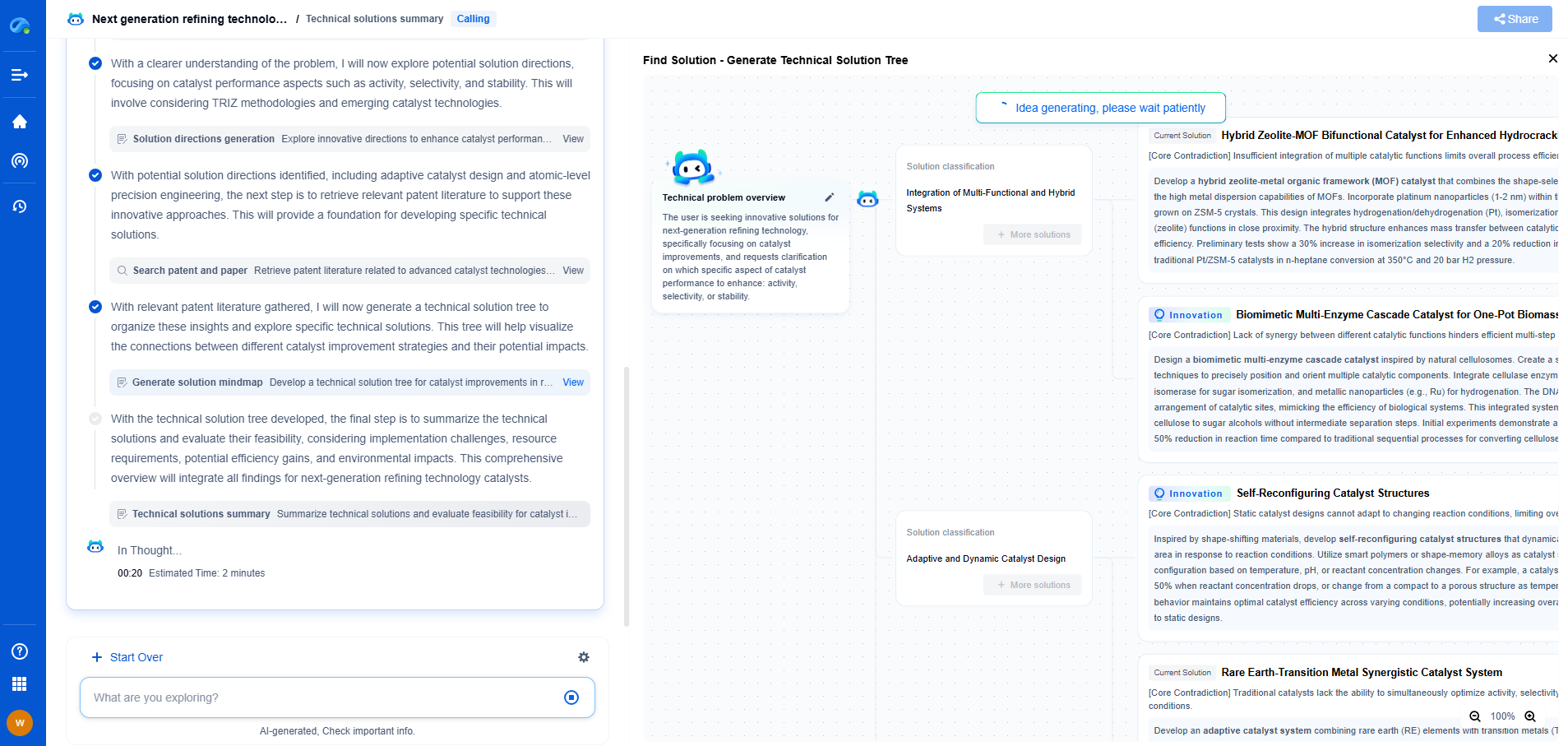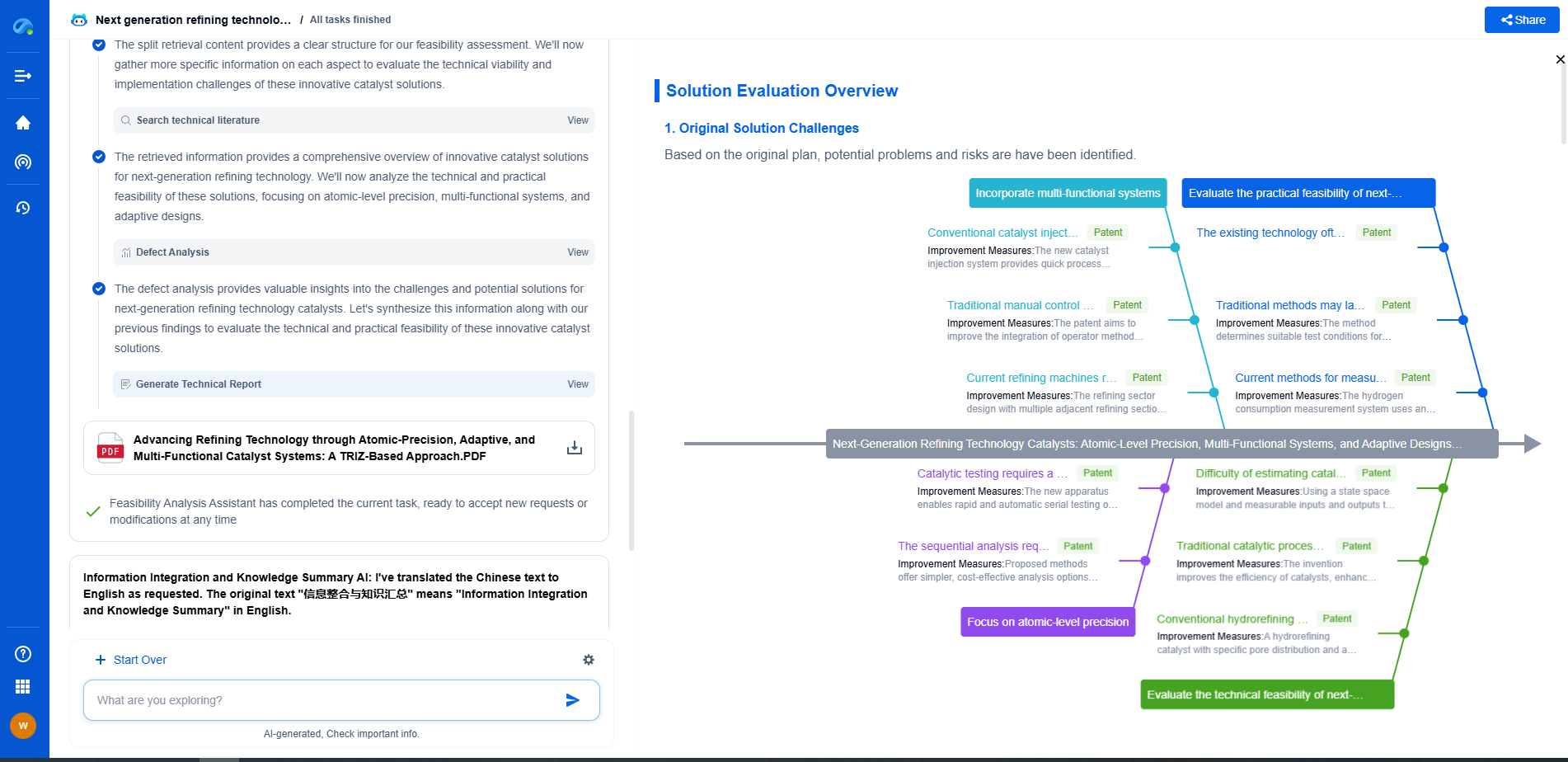Edge AI vs. Cloud AI for Real-Time Control: Trade-offs and Benchmarks
JUL 2, 2025 |
Artificial Intelligence (AI) has revolutionized the way businesses operate, and its application in real-time control systems is no exception. Two predominant architectures have emerged in this realm: Edge AI and Cloud AI. By understanding their differences and evaluating their trade-offs, businesses can make informed decisions on which architecture best suits their needs.
Understanding Edge AI
Edge AI refers to the deployment of AI algorithms directly on devices at the "edge" of a network, closer to where data is generated. This can include everything from smartphones to industrial machines. By processing data locally, Edge AI enables real-time analysis and decision-making. This architecture is especially beneficial for applications that require instant response times, such as autonomous vehicles or industrial robotics.
Benefits of Edge AI
1. Low Latency: Since data processing occurs locally, Edge AI minimizes the delays associated with sending information to a centralized server, making it ideal for applications that demand immediate action.
2. Enhanced Privacy and Security: Local processing reduces the need to transmit sensitive data over potentially insecure networks, therefore enhancing data privacy and security.
3. Reduced Bandwidth: By processing data on the device itself, Edge AI reduces the amount of data transmitted over the network, lowering bandwidth usage and costs.
Challenges of Edge AI
1. Limited Computational Power: Devices at the edge often have constrained processing capabilities, which can limit the complexity of the AI models they can run.
2. Maintenance and Scalability: Managing and updating multiple devices in the field can be challenging, particularly as the number of devices grows.
Exploring Cloud AI
Cloud AI, on the other hand, relies on centralized data processing in remote data centers. It leverages the vast computational resources of the cloud to handle complex AI tasks, making it a popular choice for applications requiring significant processing power.
Advantages of Cloud AI
1. High Computational Resources: Cloud AI can harness powerful servers to run sophisticated models, providing the capability to process large volumes of data efficiently.
2. Scalability: Cloud AI solutions are inherently scalable, allowing for seamless expansion as data and processing demands grow.
3. Simplified Management: Centralized updates and maintenance of AI models are easier in a cloud environment, streamlining operations for organizations.
Limitations of Cloud AI
1. Latency Concerns: The necessity of data transmission to and from the cloud can introduce delays, which may not be suitable for time-sensitive applications.
2. Data Privacy Issues: Transmitting sensitive information over the internet to a remote server can pose privacy and security risks.
3. Dependency on Internet Connectivity: Cloud AI requires a stable internet connection, which may not be feasible in all deployment scenarios.
Trade-offs Between Edge AI and Cloud AI
The choice between Edge AI and Cloud AI is rarely clear-cut and involves balancing several trade-offs. For applications where real-time processing and data privacy are paramount, Edge AI might be the better option. Conversely, for applications demanding high computational power and scalability, Cloud AI could be more appropriate.
Benchmarking Edge and Cloud AI for Real-Time Control
When evaluating Edge AI and Cloud AI for real-time control, benchmarks are critical. Key performance indicators such as latency, accuracy, power consumption, and cost must be considered. For instance, a benchmark may reveal that while Edge AI offers superior latency performance, Cloud AI may excel in terms of model accuracy and scalability.
Conclusion
Ultimately, the decision between Edge AI and Cloud AI should be based on the specific requirements of the application in question. Businesses must weigh the importance of factors like latency, computational power, and data security to determine the most suitable AI architecture. As technology continues to evolve, hybrid solutions that leverage the strengths of both Edge and Cloud AI may offer the best of both worlds for real-time control applications.
Ready to Reinvent How You Work on Control Systems?
Designing, analyzing, and optimizing control systems involves complex decision-making, from selecting the right sensor configurations to ensuring robust fault tolerance and interoperability. If you’re spending countless hours digging through documentation, standards, patents, or simulation results — it's time for a smarter way to work.
Patsnap Eureka is your intelligent AI Agent, purpose-built for R&D and IP professionals in high-tech industries. Whether you're developing next-gen motion controllers, debugging signal integrity issues, or navigating complex regulatory and patent landscapes in industrial automation, Eureka helps you cut through technical noise and surface the insights that matter—faster.
👉 Experience Patsnap Eureka today — Power up your Control Systems innovation with AI intelligence built for engineers and IP minds.
- R&D
- Intellectual Property
- Life Sciences
- Materials
- Tech Scout
- Unparalleled Data Quality
- Higher Quality Content
- 60% Fewer Hallucinations
Browse by: Latest US Patents, China's latest patents, Technical Efficacy Thesaurus, Application Domain, Technology Topic, Popular Technical Reports.
© 2025 PatSnap. All rights reserved.Legal|Privacy policy|Modern Slavery Act Transparency Statement|Sitemap|About US| Contact US: help@patsnap.com

